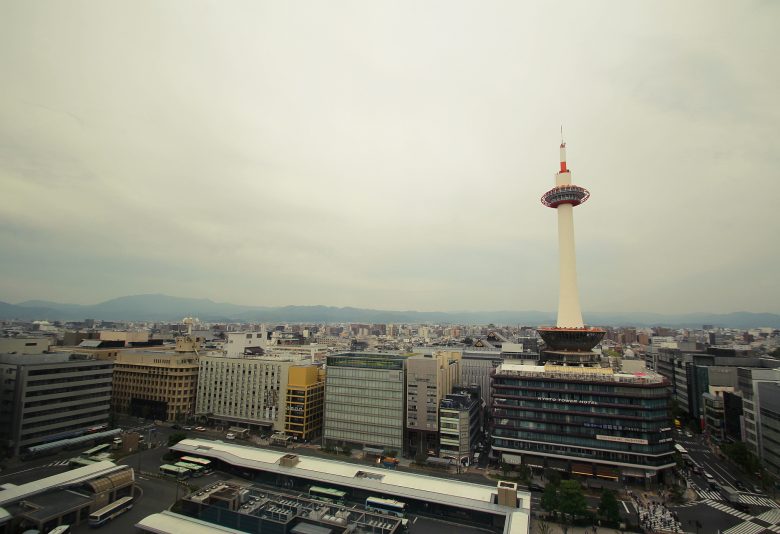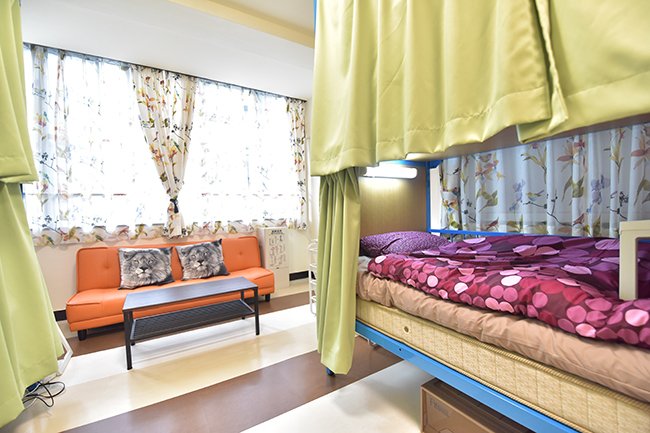
In und um Kyoto sprechen
Kyoto ist eine großartige Stadt zum Studieren, Arbeiten oder Reisen. Es gibt großartige historische Sehenswürdigkeiten, um in die Kultur einzutauchen. Es ist nicht so überfüllt wie die großen Metropolen Tokio oder Osaka, aber es ist nicht so verlassen wie eine ländliche Stadt. Die Atmosphäre ist schön mit vielen grünen Natur, einer großen Auswahl an Geschäften, Restaurants und Izakayas, um Ihre Klassenkameraden oder Arbeitskollegen nach einem langen Tag zu treffen. Was auch immer der Grund für Ihren Aufenthalt in Kyoto sein mag, es wird sicherlich viele Möglichkeiten geben, mit den Einheimischen in Kontakt zu treten. Auf diese Weise hören Sie möglicherweise einige ungewöhnliche Wörter, die häufiger als erwartet verwendet werden, was Sie an Ihren Sprachkenntnissen zweifeln lässt, aber keine Angst! Dies ist nur "Kyoto-ben" oder Kyoto-Dialekt.
Der Kyoto-Dialekt teilt viele Ausdrücke mit Kansai-ben (Kansai-Dialekt), die überall in diesem Gebiet gesprochen werden. Lassen Sie uns einige der gemeinschaftlich Wörter und Ausdrücke überprüfen, die Sie in Kyoto hören können.

Oideyasu ・ お い で や す
Dies ist das Äquivalent zu „Irasshaimase“, das regelmäßig beim Betreten eines Geschäfts / Restaurants zu hören ist, während es vom Personal gelobt wird. Obwohl die Verwendung von „Irasshaimase“ sehr gemeinschaftlich, können traditionellere Geschäfte, gehobene Restaurants und Ryokans stattdessen „Oideyasu“ verwenden. Eine andere Alternative zu diesem Ausdruck ist "okoshiyasu", das eine etwas höflichere Konnotation hat. Ersteres wird offenbar am häufigsten bei Erstkunden und später bei Stammkunden verwendet.
Ookini ・ お お き に
Sie können dies ziemlich oft hören, wenn Sie einen Laden verlassen oder in Gesprächen. Es ist das Äquivalent von "Arigato" (danke) in Standard-Japanisch. Manchmal kann es sogar vorkommen, dass beide zusammen als „ookini arigatou“ verwendet werden. Dies liegt daran, dass "ookini" ursprünglich "sehr" oder "sehr" bedeutete, wie in "vielen Dank". "Arigato" wird jedoch normalerweise nicht mehr verwendet.
Ein weiterer Zusatz, den Sie vielleicht hören, ist "Maido" wie in "Maido Ookini". Dies vermittelt die Bedeutung von „Danke, dass Sie unser Geschäft immer unterstützen“.
~ haru ・ ~ は る
Dies ist eine abschließende Grammatikkonstruktion, die natürlich beim Sprechen verwendet wird. Entwickelt aus der „keigo“ (höflichen) Konstruktion von Verben, können Sie im Kyoto-Dialekt das Verb in seine negative Form konjugieren (unvollständige Konstruktion) und anstelle der negativen Endung „~ nai“ „haru“ hinzufügen.
Beispiel: 行 く iku (zum Mitnehmen) ⇒ 行 か は るIkaharu.
In der Nähe von Osaka ändert sich die Konstruktion jedoch folgendermaßen (unter Verwendung der kontinuierlichen und der konjunktiven Form):
Beispiel: 行 くiku (zu gehen) ⇒ 行 行 は るIkiharu
~ Henne ・ へ ん
Dies wird in der gleichen Bedeutung wie "~ nai" verwendet, um ein Verb mit seinem Negativ im Standardjapanisch zu konjugieren.
Beispiel: 分 か ら な いWakaranai ⇒ 分 分 ら へ へWakarahen
Möglicherweise hören Sie auch hier geringfügige Abweichungen, wie dies bei で き ひ ん der Fall sein kann "Dekihin", entwickelt ausで き な い"Dekinai" (kann nicht).
Kamahen ・ か ま へ ん
Im Zusammenhang mit dem "~ hen" -Ende negativer Verben ist hier eines, das Sie vielleicht hören. Dies ist das Verb „kamau“ (zu bedenken, sich zu kümmern), das mit ~ hen in sein Negativ umgewandelt wurde, jedoch eine abgekürzte Transformation von „kamawahen“ zu „kamahen“ gesehen hat. Es hat die Bedeutung von "Mir geht es gut, keine Sorge".
Beispiel:
Person A: 遅 れ て ご め ん ん さ さ。 ”Okurete gomennasai” (Entschuldigung für die Verspätung)
Person B: か ま へ ん 、 、 か へ へ ん"Kamahen, kamahen" (Mach dir keine Sorgen)
Chau ・ ち ゃ う
Nachdem Sie sich vom Standard „Chigau“ (um sich zu unterscheiden, sich zu unterscheiden) entwickelt haben, haben Sie das Gefühl, nach Bestätigung zu suchen, wenn Sie Ihren Satz mit „Chau“ beenden.
Beispiel: こ れ は 寿司 ち ゃ ゃ う"Kore wa sushi chau?" (Ist das nicht Sushi?)
Akan ・ あ か ん
Entspricht der Bedeutung von „Dame“ im Standardjapanisch und bedeutet: falsch, nicht gut, muss (nicht).
Beispiel: こ れ を 食 べ た ら あ か ん ん"Kore o tabetara akan" (Das darfst du nicht essen).
Omoroi ・ お も ろ ろ
Adjetiv mit der gleichen Bedeutung wie "Omoshiroi" (amüsant, angenehm) in Standard-Japanisch.
Honma ・ ほ ん ま
Diesen können Sie viel hören. Es hat die gleiche Bedeutung wie "honto" (echt) im Standardjapanisch. Eine bestimmte Kombination, auf die Sie stoßen könnten, ist "honma ya!" (das stimmt! / das stimmt so) oder "honma ni?" (Ja wirklich?).
Agaru ・ あ が る/ Sagaru ・ さ が る
Besonders wenn Sie nach dem Weg in Kyoto fragen, hören Sie möglicherweise Leute, die „Agatte“ (nach oben) oder „Sagatte“ (nach unten) sagen. Dies bedeutet einfach, in Richtung Norden (oben) oder Süden (unten) zu gehen. Die Tatsache, dass die Straßen von Kyoto ein Raster haben, ermöglicht es, auf diese Weise auf Anweisungen zu verweisen.
Beispiel: あ そ こ の 角 に 右 に 曲 が っ っ て あ が と と す ぐ に 着 き ま す"Asoko no kado ni magatte agaru zu sugu ni tuikimas" (Biegen Sie an dieser Ecke rechts ab, gehen Sie nach Norden und Sie werden in Kürze ankommen).
Nandeyanen ・ な ん で で や ね
Dies ist ein Muss, wenn Sie von einem bestimmten Dialekt in der Region Kansai sprechen. Es bedeutet im Grunde "warum", hat aber aufgrund seiner Konstruktion eine verstärkte Konnotation. Ein besseres Gefühl könnte sein: "Warum eine Erde?" oder "was zur Hölle!" als würde man sich ziemlich über die fragliche Situation aufregen. Es wird sehr gut in Comic-Sketchen verwendet (das Kansai-Gebiet ist bekannt für seine Comedians) und ein Muss für Ihre lokalen Freunde.
Einige zusätzliche Wörter, auf die Sie möglicherweise stoßen

Obanzai ・ お ば ん ん い
Sie können dies in der Beschreibung eines Restaurants oder auf seiner Speisekarte sehen. Es bezieht sich auf typische hausgemachte Gerichte und vermittelt den Kunden ein Gefühl von Zuhause.
Taitan ・ 炊 い た た
Ein anderes Wort, das Sie vielleicht auf der Speisekarte eines Restaurants sehen. Dies ist das Äquivalent von 煮 物 ("Nimono" oder gedünstetes / gekochtes Geschirr).
Beispiel: 大 根 炊 い た ん"Daikon Taitan" (gedünsteter Daikon-Rettich)
Wir hoffen, dass Sie sich mit diesen Worten weiterhin auf Ihren zukünftigen Besuch in Kyoto und all die Wunder vorbereiten können, die Sie in der Region Kansai entdecken können.
SAKURA HOUSE
Nishi-Shinjuku K-1 Bldg. 2F
7-2-6 Nishi-Shinjuku, Shinjuku-Ku Tokio, Japan
Postleitzahl: 160-0023
google Karte
- Aus Japan:
- 03-5330-5250
- Von außerhalb Japans:
- +81-3-5330-5250
- Mail:
- [email protected]
- Geschäftszeiten:
- 8.50 bis 20.00 Uhr
Wir sind jeden Tag des Jahres geöffnet.
- Tokio Zeit:
- 00:32







